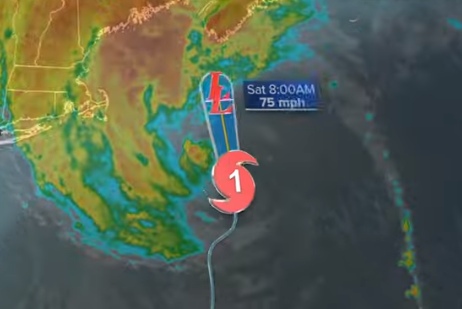Hurricane Lee Strikes the Atlantic Coast: Residents Brace for Impact
Hurricane Lee, a powerful and menacing storm, has made landfall along the Atlantic Coast, sending residents and emergency services into high gear as they prepare for its potentially devastating impact. The Category 4 hurricane, which had been intensifying over the past several days, hit the coastline with full force earlier this morning, bringing heavy rains, strong winds, and the threat of widespread destruction.
Evacuations and Emergency Preparedness
In the days leading up to Hurricane Lee’s arrival, authorities issued mandatory evacuation orders for many coastal areas in its path. Residents were urged to leave their homes and seek shelter in designated evacuation centers, while tourists were advised to vacate the area immediately. Local governments and emergency management agencies have been working tirelessly to ensure that evacuation routes are clear, shelters are well-stocked, and essential services are prepared to respond to the storm’s impact.
Meteorological Details
Meteorologists had been closely monitoring Hurricane Lee as it developed into a major hurricane over the warm waters of the Atlantic Ocean. With sustained winds of up to 140 mph (225 km/h) and a large, well-defined eye, Lee posed a significant threat to coastal communities. Forecasters also warned of the potential for catastrophic storm surges, as well as the risk of flash flooding and landslides in areas farther inland.
Preparing for the Worst
Residents who chose to stay behind have been busy boarding up their homes, securing loose objects, and stocking up on essential supplies such as food, water, and batteries. Many are also equipped with emergency generators in anticipation of potential power outages. Local emergency services, including police, fire departments, and medical teams, have been mobilized and are standing by to respond to any emergencies that may arise.
Historic Comparisons
Hurricane Lee’s strength and projected path have drawn comparisons to some of history’s most destructive storms. Notably, it is tracking along a path that mirrors that of the infamous Hurricane Katrina in 2005, prompting heightened concerns about potential devastation. However, authorities emphasize that advances in forecasting and emergency preparedness have improved since that time, and they are confident in their ability to respond effectively to this latest threat.
International Response
The impact of Hurricane Lee is not limited to the United States, as it is expected to bring heavy rainfall and flooding to neighboring countries as well. The Bahamas, the Turks and Caicos Islands, and parts of eastern Canada are also on alert and have taken precautions to protect their residents and infrastructure.
Ongoing Monitoring
As Hurricane Lee continues to move inland, meteorologists will closely monitor its progress, issuing updates and advisories to keep residents informed about potential threats. It is essential for everyone in the affected regions to stay updated on the latest weather forecasts and heed the advice of local authorities to ensure their safety.
Hurricane Lee’s arrival along the Atlantic Coast has sparked widespread concern, prompting evacuations and emergency preparations. While the storm’s full impact remains uncertain, residents and emergency services are working together to mitigate its effects and ensure the safety of those in its path. The coming days will be critical, as communities brace for what could be a historic weather event.

